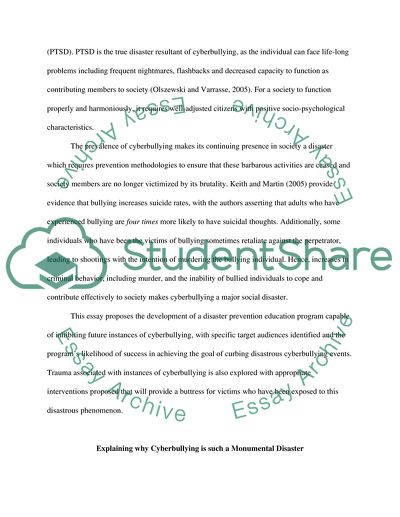Cite this document
(The Disaster of Cyberbullying Research Paper Example | Topics and Well Written Essays - 2500 words, n.d.)
The Disaster of Cyberbullying Research Paper Example | Topics and Well Written Essays - 2500 words. Retrieved from https://studentshare.org/sociology/1878351-war-terrorism-and-disasters
The Disaster of Cyberbullying Research Paper Example | Topics and Well Written Essays - 2500 words. Retrieved from https://studentshare.org/sociology/1878351-war-terrorism-and-disasters
(The Disaster of Cyberbullying Research Paper Example | Topics and Well Written Essays - 2500 Words)
The Disaster of Cyberbullying Research Paper Example | Topics and Well Written Essays - 2500 Words. https://studentshare.org/sociology/1878351-war-terrorism-and-disasters.
The Disaster of Cyberbullying Research Paper Example | Topics and Well Written Essays - 2500 Words. https://studentshare.org/sociology/1878351-war-terrorism-and-disasters.
“The Disaster of Cyberbullying Research Paper Example | Topics and Well Written Essays - 2500 Words”, n.d. https://studentshare.org/sociology/1878351-war-terrorism-and-disasters.


